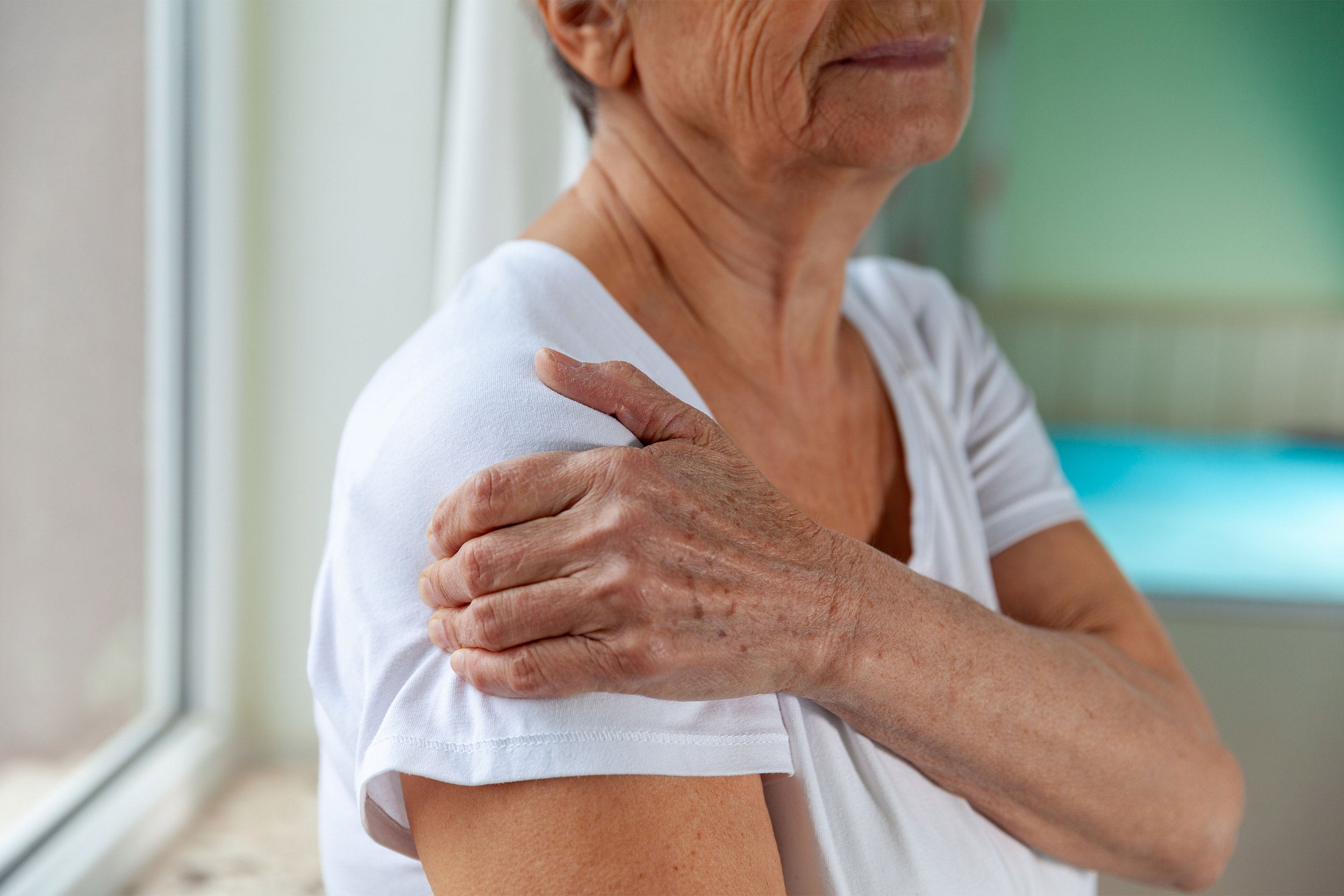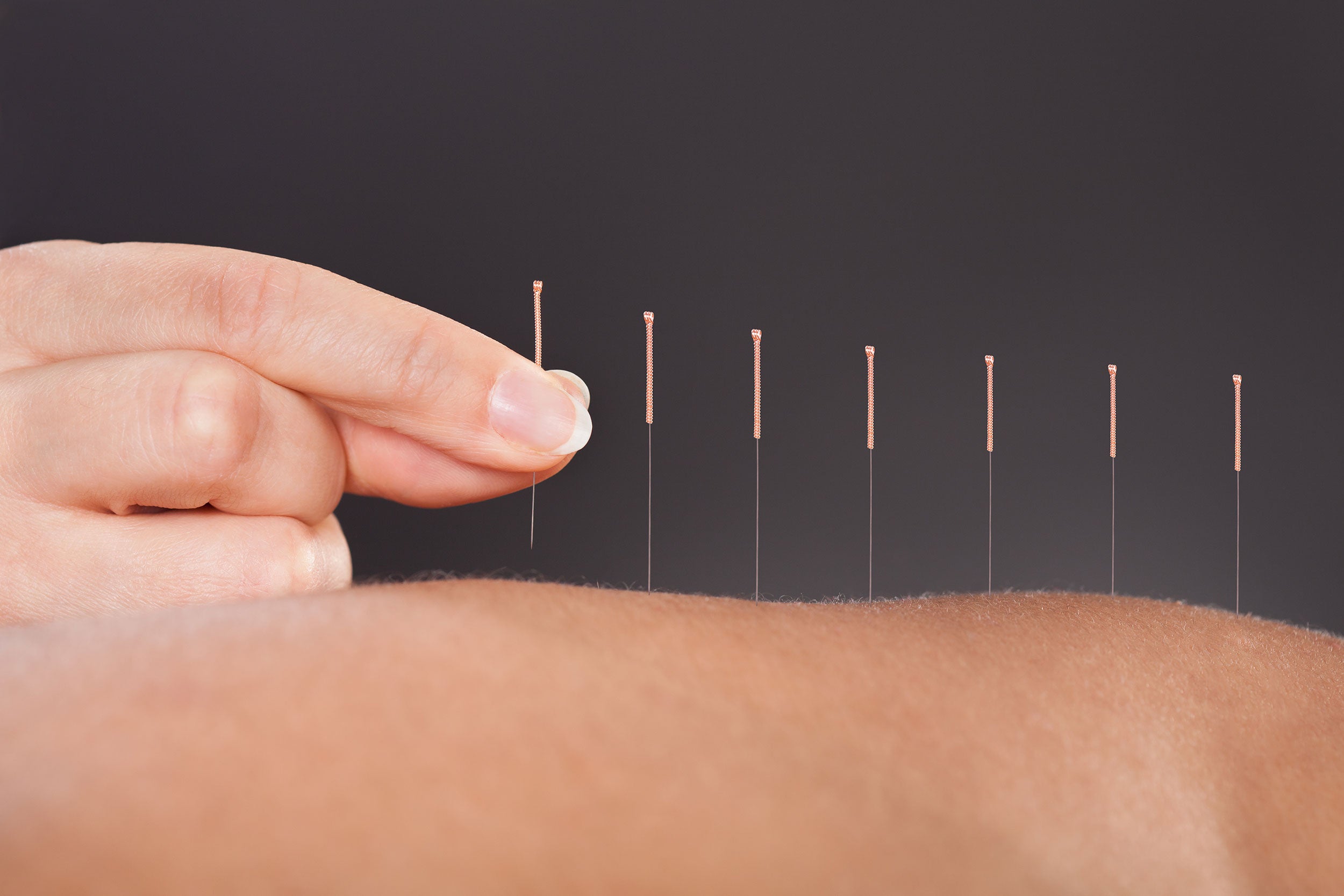
Cancer patients who are male, white, and divorced or single face the greatest risk of suicide, according to the study.
Nicolas McComber/iStock by Getty Images
Researchers find key to healing muscle injuries in elderly
Controlling inflammation enables injured aged muscle recovery, offering promise for the future of mechanotherapies.
Using mechanical forces — including massage — to stimulate tissue healing has been a form of physical therapy for decades. However, the biological basis and optimal settings for noninvasive mechanotherapies are still poorly understood, especially with respect to elderly patients.
A new multidisciplinary study has investigated whether elderly patients can benefit from tailored mechanotherapy for severely injured muscles the same way that young patients can.
The study was performed by researchers at the Wyss Institute for Biologically Inspired Engineering and the Harvard John A. Paulson School of Engineering and Applied Sciences (SEAS), led by Wyss core faculty member David Mooney in collaboration with associate faculty member and Paul A. Maeder Professor of Engineering and Applied Sciences Conor Walsh . In previous work, the collaborators used Walsh’s lab to develop a robotic mechanotherapy device that functions like a highly advanced massage gun. This technology enabled precise delivery of mechanotherapy to injured muscles in mice, allowing the team to measure its biological effects.
In young animals, the researchers found mechanotherapy accelerated muscle healing by mitigating inflammation. However, on aged muscle, the researchers found that the same treatment actually had the opposite effect — the settings that promoted healing in young muscle exacerbated injury in old muscle.
Searching for an explanation, the team found that mechanotherapy amplified inflammation in aged muscle, hindering the normal healing process by disrupting the behavior of muscle stem cells, a subset of cells responsible for replacing damaged muscle tissue.
The researchers next asked if controlling inflammation along with delivering mechanotherapy could help heal aged muscles. They found that this was indeed the case: combining mechanotherapy with anti-inflammatory treatment significantly improved healing in aged muscles and was superior to anti-inflammatory treatment alone. This work, published in Science Robotics, opens an exciting, noninvasive therapeutic avenue for elderly patients.
“Our study highlights critical differences in how muscle stem cells and immune cells respond to mechanical forces in the context of age, and how upregulated inflammation additionally compromises the function of aged stem cells needed for the regeneration of old muscles,” said Mooney who also is the Robert P. Pinkas Family Professor of Bioengineering at SEAS. “Muscle mechanotherapies likely thus won’t be a ‘one-size-fits-all.’ To realize their benefits, they will have to be tailored to patient populations, and specifically for aged individuals, it will be key to modulate inflammation.”
From surprise to solution
Following their surprising discovery, the team took a closer look at the muscles’ stem cells. They saw that applying a mechanical load to muscle, as happens during mechanotherapy treatment, influences muscle cell behavior via several molecular “mechanotransduction pathways” that also affect stem cells.
“We showed that although aged stem cell behavior was disrupted by the elevated inflammation, they were still able to ‘feel’ the mechanical forces of loading as we demonstrated by the activation of these pathways,” said first author Stephanie McNamara , a graduate student on Mooney’s team who is currently enrolled in the joint Harvard/MIT M.D.-Ph.D. program. “This actually was what prompted us to ask whether controlling inflammation might enable these cells to respond to the mechanical stimuli — and indeed it did.”
The team found that administering anti-inflammatory therapy in the form of the steroid hormones glucocorticoids alongside mechanotherapy suppressed key pro-inflammatory pathways and reduced overall inflammation levels in injured aged muscle to those seen in injured young muscle. Yet at a cellular level, the muscle cells continued to experience mechanotransduction, and by removing the negative impacts of inflammation, injured aged muscles could positively respond to the robot-delivered mechanical loading.
“It is well-known that, with age, many of the normal processes of muscle healing and inflammation change. It’s important to question whether the same mechanisms seen in studies performed in young animals stay the same as the body ages,” McNamara said. “By leveraging what we learned in this study and our previous work and combining it with growing expertise in wearable soft robotic systems, we believe that in the future personalized mechanotherapeutic approaches can be developed to heal injuries across all ages.”
Other authors on the study are additional members of Mooney and Walsh’s groups, including Bo Ri Seo, Benjamin Freedman, Emily Roloson, Jonathan Alvarez, C.T. O’Neill, and Herman Vandenburgh, professor emeritus at Brown University, Providence, Rhode Island.
The study was funded by the National Institute of Dental and Craniofacial Research (under grant #R01DE013349), National Science Foundation (under grant #DMR-1420570), National Institute of Arthritis and Musculoskeletal and Skin Disease (under grant #F31AR075367), National Institutes of Health (under grant #K99AG065495), National Institute of General Medical Sciences (under award #T32GM007753 and T32GM144273), as well as an AR3T Regenerative Rehabilitation pilot grant.

